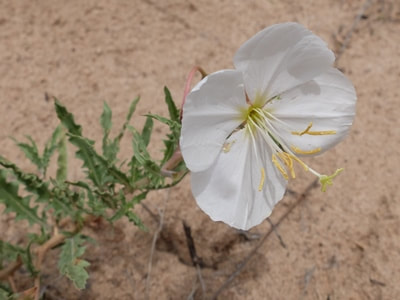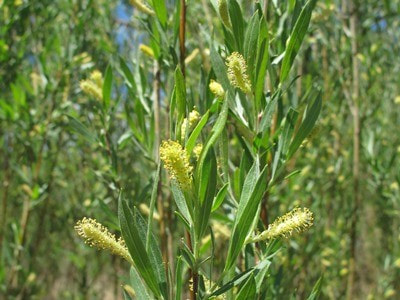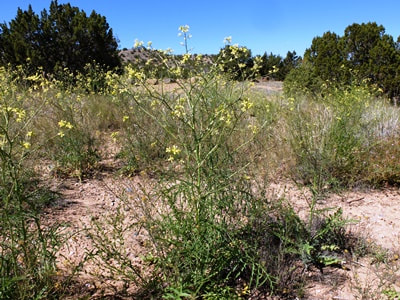|
Found in sandy areas, canyons Seen blooming in June in Plaza Blanca There is a lot of chat these days about AI and ChatGPT so I asked Bing to write this week’s blog. I typed “Write a blog about plantago patagonica” and this is what it wrote. Woolly Plantain: A Hairy Herb with Many Uses Have you ever heard of woolly plantain? No, I’m not talking about the starchy fruit that looks like a banana. I’m talking about a small, hairy plant that grows in many parts of North America and South America. Woolly plantain (Plantago patagonica) is a species of plantain, a group of plants that have long, narrow leaves and tiny flowers clustered on spikes. Woolly plantain gets its name from the dense layer of white hairs that covers its leaves and flower spikes. Woolly plantain is an annual herb, which means it completes its life cycle in one year. It can grow up to 10 cm (4 inches) tall and 15 cm (6 inches) wide. It prefers dry, open habitats, such as grasslands, woodlands, fields, roadsides, and waste areas. It can tolerate drought and poor soils. It blooms from spring to fall, producing cylindrical or conical spikes of white or pink flowers that are pollinated by wind or insects. Woolly plantain has been used by Native Americans for various purposes. The Navajo, Puebloans, and Hopi used it as a medicinal and ceremonial plant. They applied the crushed leaves to treat headaches, diarrhea, colic, and wounds. They also ate the leaves or drank the tea to reduce appetite and prevent obesity. They used the seeds as beads or food. They burned the dried plants as incense or smudge sticks to purify the air and ward off evil spirits. Woolly plantain is not only useful for humans, but also for wildlife. It provides food and shelter for many insects, such as bees, butterflies, moths, beetles, and grasshoppers. It also attracts birds that feed on its seeds, such as sparrows, finches, and quails. Woolly plantain is a common and widespread plant that you may have overlooked before. Next time you see it growing in your area, take a closer look and appreciate its beauty and benefits. I hope this blog post helps you learn more about woolly plantain. Pretty impressive, don’t you think. It even has a sense of humor. This is what I wrote. Am I out of a job? Although common, Woolly Plantain can be easily overlooked, growing only a few inches tall. It grows in tufts with velvety, narrow leaves. The tiny greenish-white flowers are less than 1/8 inch across, have four petals and grow in a fuzzy, dense spike. Native Americans made a tea from the plant to treat diarrhea and headaches. Havasupai and many other southwest tribes utilized the seeds as a meal, hence the common name Indian Wheat. The Hopi gave the plant to a person “to make him more agreeable”. Source. If you are trying to identify a different flower then you can check what other flowers bloom this month. If you cannot identify a flower from the website, send a photo and where you took it to [email protected]. Read online for tips.
0 Comments
Found in gullies, open woods
Seen blooming in June near the Tierra Azul acequia The Wild Sweetpea grows climbing or sprawling to 20 inches. The leaf is divided into three to five pairs of narrow lance-shaped leaflets which are leathery and up to 2½ inches long. A tendril grows from the tip of the leaf which enables it to climb on other plants. The flowers have a pleasant fragrance and grow in loose clusters of two to five showy blossoms, one inch across. The broad upper petal can be purple to rose in color, the two lower petals are whitish. The fruit that develops from the flower is a flat pod, less than two inches long. An infusion of the plant was used by Navajos to treat horses for various injuries or swellings, as a lotion for 'deer infection' and as a gynecological aid. Source. If you are trying to identify a different flower then you can check what other flowers bloom this month. If you cannot identify a flower from the website, send a photo and where you took it to [email protected]. Read online for tips. ~Marilyn Phillips
Found in sandy areas Seen blooming in June in Arroyo de los Pinavetes, Santa Fe NF, Medanales Pale Evening Primrose grows to 20 inches high with arching reddish stems and flowers in the upper part of the stem. Older stems turn white and flaky. Leaves are narrow and can be entire, toothed or deeply lobed. Flowers are showy, fragrant and satiny white, up to three inches across with a greenish-yellow center, a hairless throat and long yellow stamens. Petals have a distinct ridge in the middle of the petal from the center of the flower. Like all evening primroses, the flowers open near sunset and close in the morning sun, drying to pink. Native Americans used the plant as a ceremonial emetic, for venereal disease, sores, spider bites, kidney disease, snake bites, sore throat, and in other ceremonial ways. Source. If you are trying to identify a different flower then you can check what other flowers bloom this month. If you cannot identify a flower from the website, send a photo and where you took it to [email protected]. Read online for tips. Found in moist areas, ditches, stream banks
Seen blooming in June by the Rio Chama Coyote Willow is very common and only one of the several varieties of willow that grow in our area. It grows to ten feet tall in thickets with yellow, red and tannish stems. The leaves are long, up to five inches, very narrow and shiny. They have tiny flowers with no petals in dense spikes called catkins with male and female flowers on separate plants. The male catkins point up, the females droop down. The photo is of male flowers loaded with pollen. The female produces masses of fluffy seeds. The fresh bark of all members of this genus contains salicin which decomposes into salicylic acid (closely related to aspirin) in the human body. Traditionally, the bark was used to treat fevers, coughs, venereal diseases, and sore throats, and was taken as an emetic. Branches were used for building sweat lodges for rheumatism and colds; the young twigs were used to make baskets, mats, and cordage. The fibers in the bark have been woven to make clothing, bags and blankets. The shredded inner bark has been used to make sanitary towels and babies' nappies. The twigs have been used as toothbrushes. Source. If you are trying to identify a different flower then you can check what other flowers bloom this month. If you cannot identify a flower from the website, send a photo and where you took it to [email protected]. Read online for tips. Found in sandy, rocky, disturbed soil
Seen blooming in May at Abiquiu Lake This annual weed grows over 3 feet tall in an open, airy pattern. It is distinguished by large, deeply lobed, toothed basal leaves and very narrow, delicate leaves on the upper part of the stem. Pale yellow flowers with the typical four petals of mustards are 1/2 inch across, and produce long, narrow seedpods. After fruiting, the plant becomes brittle and breaks off at the base becoming a tumbleweed. The young leaves and shoots of the plant are edible and can be used in salads, soups, and other dishes. The seeds are high in oil and protein and can be used to make a nutritious oil or flour. It has been used in traditional medicine to treat a variety of ailments, including respiratory infections, digestive problems, and skin conditions. Tall Tumble Mustard has other uses as well. The oil extracted from the seeds can be used for biodiesel, and the plant has been used for erosion control and as a cover crop to improve soil health. One interesting aspect of the plant is its ability to accumulate heavy metals from the soil. This property makes the plant useful for phytoremediation, which is the process of using plants to remove contaminants from soil or water. It has been shown to be effective at removing heavy metals such as cadmium and lead from contaminated soil, making it a potential tool for environmental cleanup. Source. If you are trying to identify a different flower then you can check what other flowers bloom this month. If you cannot identify a flower from the website, send a photo and where you took it to [email protected]. Read online for tips. |
AuthorI am Marilyn Phillips, a native of England, whose love of nature and the outdoors from childhood brought me by a circuitous route to Crested Butte, Colorado in 1993 and 16 years later to northern New Mexico. My exploration of the many trails in these areas, my interest in wildflowers and photography, and career in computer system design came together in this creation. If you have any corrections, comments or questions, please contact me by email. Archives
September 2025
Categoriescopyright © 2020
|







 RSS Feed
RSS Feed